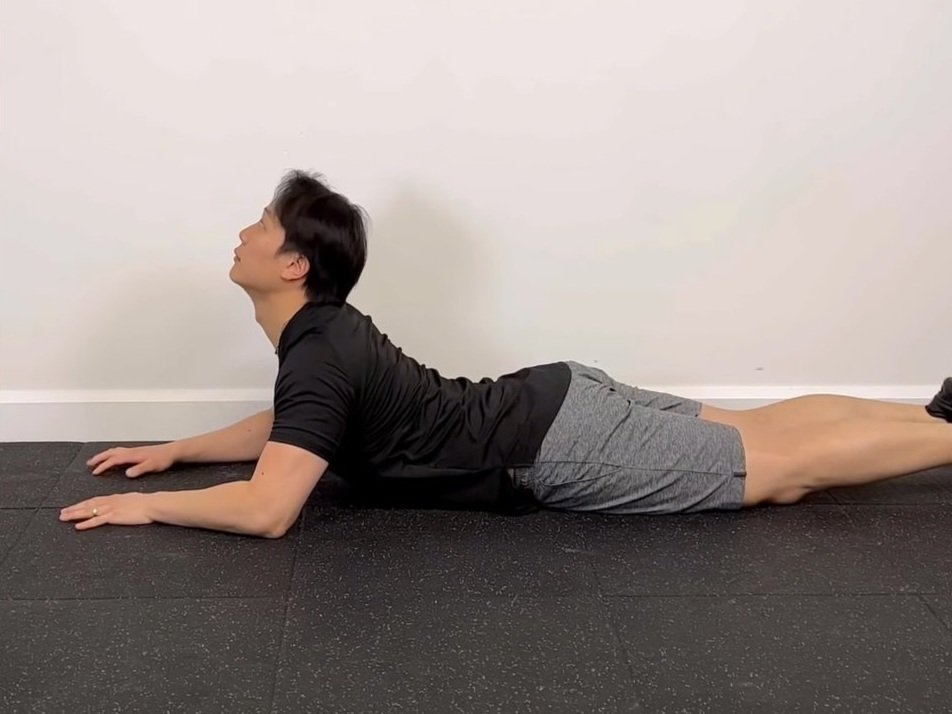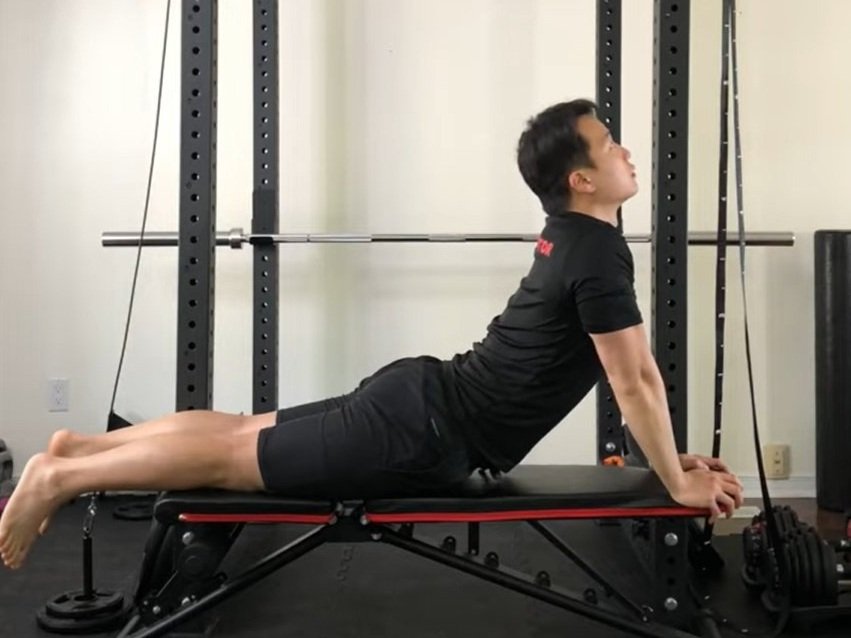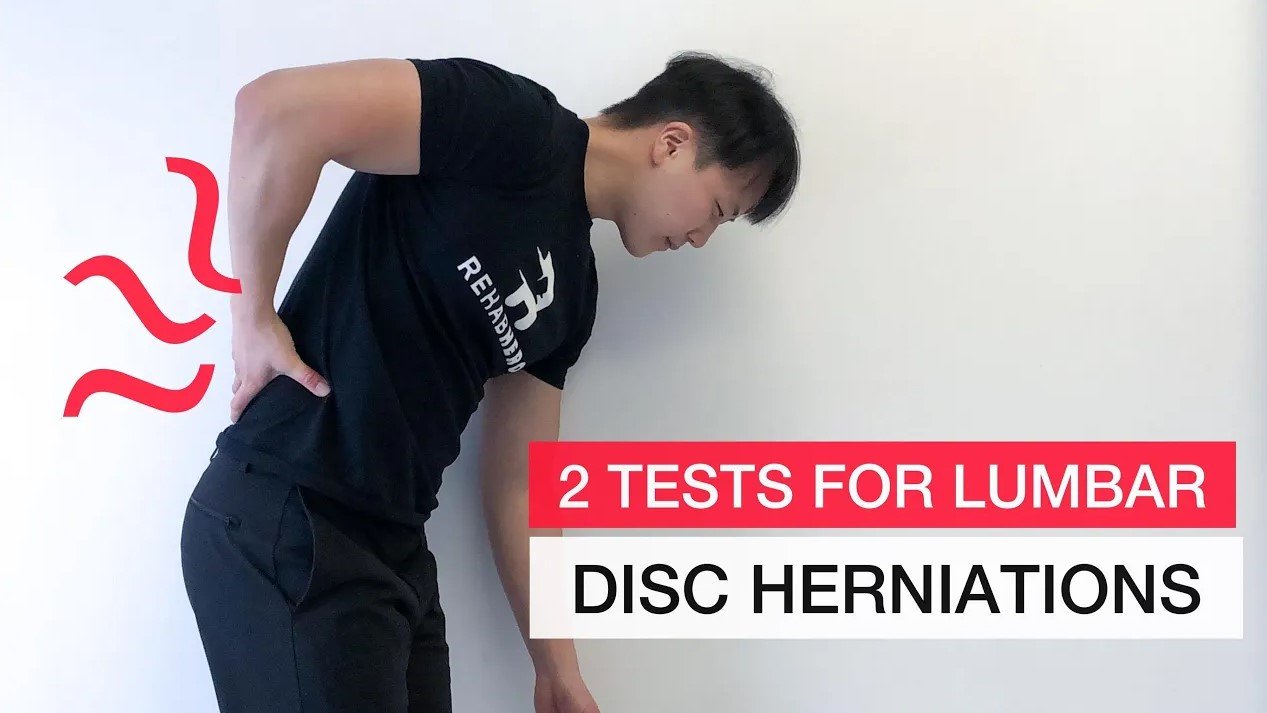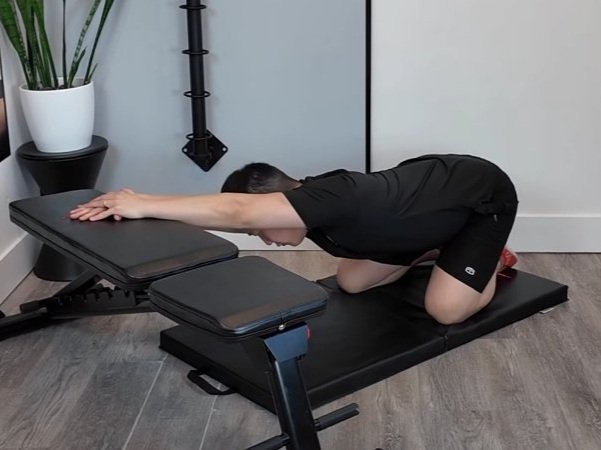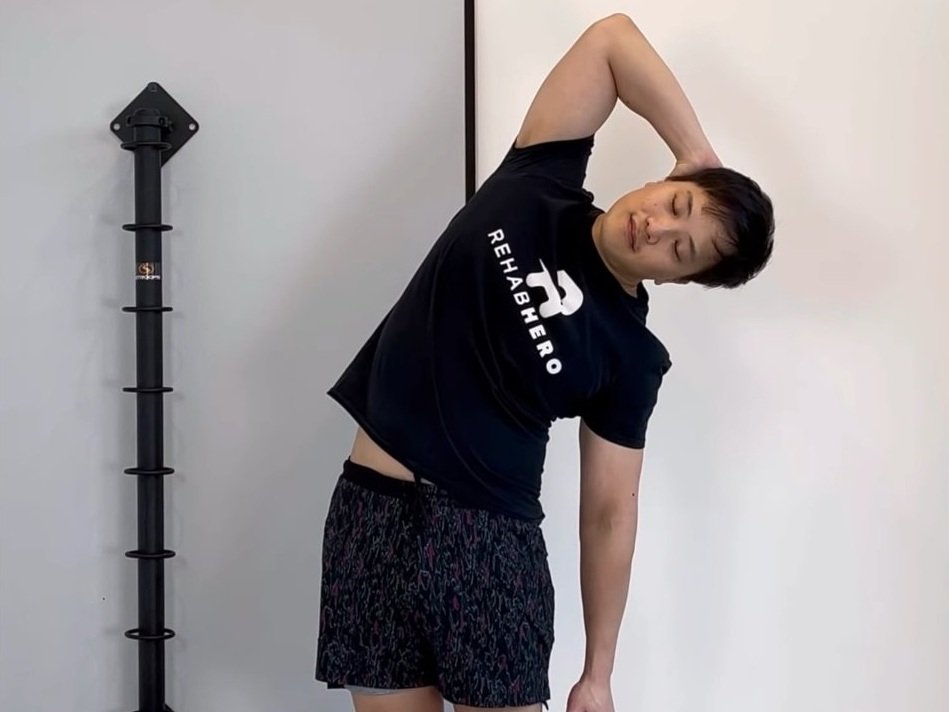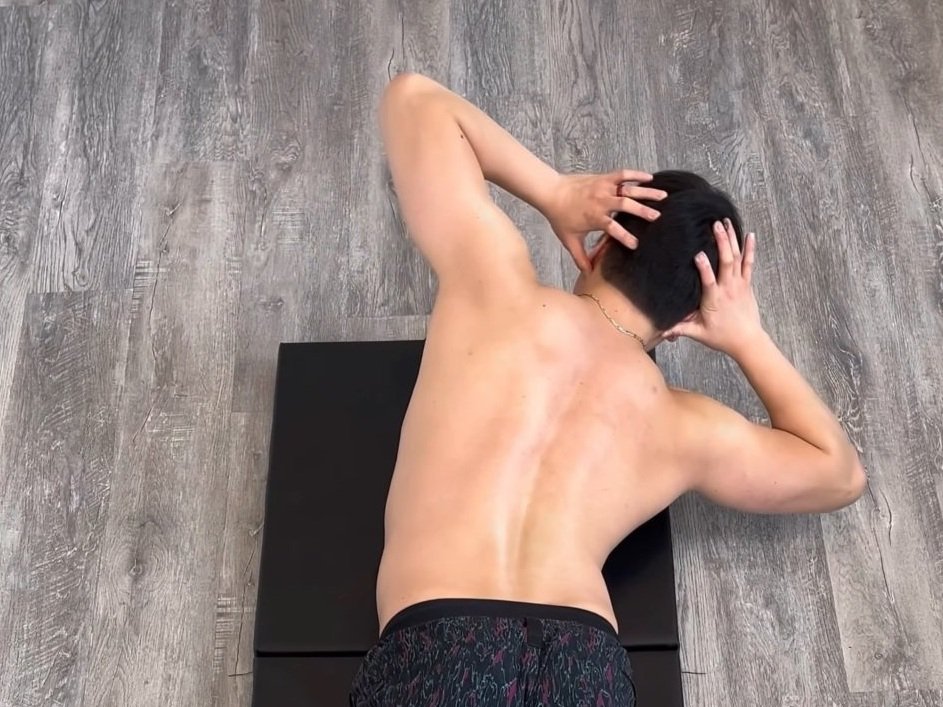Lumbar Herniated Discs: Causes, Symptoms, Treatment and Exercises
By: Dr. David Song, Chiropractor
A herniated disc, also more commonly known as a slipped disc, protruding disc or bulging disc, is a condition that is more common in young adults and middle aged populations. In most cases, this condition can be managed successfully with conservative chiropractic and/or physiotherapy care.
What is a Lumbar Disc?
A Lumbar Intervertebral Disc is a complex cartilage structure that is found between each bony segment of your spine. It has two components: a soft, fluid and gel-like inner portion called the nucleus pulposus (like toothpaste) and a tougher layered outer portion called the annulus fibrosus (which surrounds the nucleus pulposus). In this way you can think of it as a jelly-filled donut that is between each adjacent vertebrae, the jelly being the nucleus pulposus and the dough being the annulus fibrosus. The annulus fibrosus is innervated with free nerve endings that can sense pain, while the nucleus has no innervation. Next to each disc are spinal nerve roots which branch off from the spinal cord and join together to create the nerves that go into the leg (the most commonly known one being the sciatic nerve). When a disc herniates, it can compress these nerve roots that exit the spinal canal, leading to symptoms going down the leg, this is commonly referred to as sciatica.
These discs serve multiple purposes including shock absorption between each of the bones that make up your spine. The unique composition of a disc allows it to evenly distribute pressure and absorb impact from our daily activities and movements, while still maintaining the mobility.
What is a Disc Bulge?
A bulging disc is an injury to your intervertebral disc that may occur as a result of a repetitive stress trauma or single acute accident. This injury causes the inner nucleus pulposus to expand out and press against the surrounding annulus fibrosus that surrounds it. With enough force or prolonged force, the disc will bulge. Out of all regions in the spine this most commonly occurs at the Lumbar spine (lower back), but can occur anywhere in the spine including the neck (cervical spine). If under enough stress, the disc bulge may eventually develop into a herniated disc.
Discs may start to bulge in activities that push the jelly back and outwards against the walls of the annulus fibrosus - this causes wear and tear over time in the outer ‘dough’ portion of the disc causing it to weaken. Activities such as prolonged sitting, repetitive heavy lifting, twisting and bending, or any combination of them may wear down the annulus fibrosus. Thinking back on the donut analogy, when you press down on one end of the donut the jelly will push out to the opposite end, similarly repeatedly flexing the lumbar spine will push the disc towards the back where the nerve roots are located. Since the annulus fibrosus is innervated, repetitive stress can lead to feeling pain. Pain may also be produced by local inflammation at the nerve root that develops as a result of a disc bulge.
What is a Lumbar Disc Herniation?
If a disc bulge occurs because the inner nucleus pulposus is putting pressure on the annulus fibrosus (while still being contained), then a Lumbar Disc Herniation is when the nucleus pulposus pushes through the layers of the annulus fibrosus and out of the disc. In other words, if the jelly remains in the donut it is a disc bulge, but if it shoots out of the donut then it is a disc herniation.
Disc herniations tend to occur with repetitive stress in positions of bending down and twisting, this causes a pressure along the front of the disc that pushes disc contents towards the back. Over time, this repetitive stress will wear down the protective layers of the annulus and weaken the integrity of the disc. When the last layer has been worn down, that is when the disc pushes out and compresses the spinal nerve roots resulting in radiating symptoms like sciatica.
Since parts of the disc has no innervation this process can occur over time without you noticing - no pain will be registered as the inner layers of the annulus becomes damaged. However severe pain can be experienced once the outer layers have been affected, resulting in a sudden back spasm and constant pain.
What causes a Herniated Disc?
As with most joints in the body, it is common for discs to experience wear and tear that is normal with aging depending on the activities we do and the daily movements we participate in. Basic movements like bending down to tie your shoes, picking up boxes, playing with your children, reaching down, twisting while carrying a heavy object are all examples of activities that can stress your disc. If your back and core strength are strong enough, they can help to protect your discs from stresses, and these activities will be completely safe to do. If you are strong enough, you will not even notice any pain at all, and these movements will not contribute to any disability.
Issues tend to arise when your body is not conditioned to handle the activity you are participating in. More often than not issues can arise when you live a sedentary lifestyle and suddenly increase your activity demands by helping a family or friend move out of their house. Another common example occurs during the first snowfall of winter - all of a sudden your daily activity demands increase significantly when you go to shovel. Without priming the body to handle to workload first, injuries to the disc can occur.
What should I avoid with a Herniated Disc?
Since herniated discs are aggravated when you flex or bend forward the lumbar spine, the following activities should be limited:
Sit Ups - Although this exercise is known to help develop the core (specifically the rectus abdominus), this exercise adds unneeded forces to the lumbar disc that will increase the pressure on your lumbar nerve roots, which will aggravate your symptoms. Other core exercises that do not push your low back into flexion are ideally recommended when you have an active disc herniation.
Lifting Heavy Objects - This one goes without saying that lifting heavy objects is not recommended when there is an active disc herniation. This may mean that you need to modify your job duties or change your training regime. If you are a heavy lifter in the gym, take this time as a opportunity to focus and work on other accessory movements. You want to give your nerve roots a break from constant pressure to reduce inflammation and ultimately the amount of pain that you feel
Prolonged Driving or Sitting - Sitting and even worse driving (sitting combined with car vibration) can worsen the pain you feel. Even when you sit with ‘good posture’, the low back will NEED to flex to keep you seated - there’s no real way around this. Changing your seat so that it is on a decline can help. Other strategies like rolling up a towel and putting it behind the low back can help to give you more support in the short term.
What exercises can I do for a Herniated Disc?
McKenzie Based Exercises - Elbow Cobra
If bending forwards pushes the disc backwards onto the nerve root causing pain, than surely bending backwards will push the disc forwards and off of the nerve root right? In many instances that is correct! Here is the Elbow Cobra or Baby Cobra exercise that you can do throughout the day to alleviate pain.
Full Cobra
As your tolerance to exercise and movement increases during the recovery process, this exercise can be used to progress from the Elbow Cobra to the Full Cobra position as adopted from yoga.
Sciatic Nerve Flossing
Sciatic nerve flossing is an exercise that helps to reduce inflammation of the sciatic nerve. It does this through mobilization of the sciatic nerve using the connecting points starting from your head all the way down to your foot and toes. This exercise should be done pain free, so consult your therapist on how this exercise can be modified to suit your current level of functional movement.
For a full video complete with a description of the above exercises you can watch a video made by Toronto chiropractor Dr. David Song below.
Chiropractic and or Physiotherapy Care for a Herniated Disc.
For best results it is always a good idea to be assessed by a health professional so that they can guide you through your exercise program. The exercises in this blog post only tap on the iceberg of exercises that can be done to help to improve the pain that you are experiencing. Your trusted health professional will assess you to point out your compensation strategies and will guide you on how to perform each exercise correctly and safely. Your physiotherapist or chiropractor will also provide hands on treatment to release your stiff muscles and restricted joints. They may also offer therapeutic modalities such as acupuncture and provide you with education so that you can understand your education and how to best take care of yourself while you recover.
You can also relieve your tension and pain with a Registered Massage Therapist to compliment your treatments through soft tissue release and mobilization.
Tests for a herniated disc
A physiotherapist or chiropractor near you can perform orthopedic, neurological, range of motion, and muscle strength tests in order to determine if you have a lumbar disc herniation. This is assessed in person and within the clinic and can be done prior to getting any additional imaging like an MRI. By checking your movement quality, tissue tonicity, and reflexes your physio or chiro can accurately diagnose you without wasting time waiting for a MRI appointment. You can watch our video below made by our Toronto chiropractor for examples of orthopedic tests that would be used in your chiropractic of physiotherapy appointment.
How Long Does it Take to Recover from a Herniated Disc?
With treatment from a Chiropractor or Physiotherapist most patients will recover within 3 months since onset of symptoms. This will depend on having the right balance between rest and activity, as well as rehabilitation exercises. With guided therapy most experience a 50% improvement within the first 6 weeks of functional rehabilitation.
With chronic, re-occurring, or long-term co-existing back conditions, recovery can take much longer to respond to treatment. These cases may take months to recover while including long term self management strategies into your daily routine.
Contact us if you are suffering from low back pain or disc injury or click here to book in directly online with an experienced Rehab Hero chiropractor or physiotherapist.


